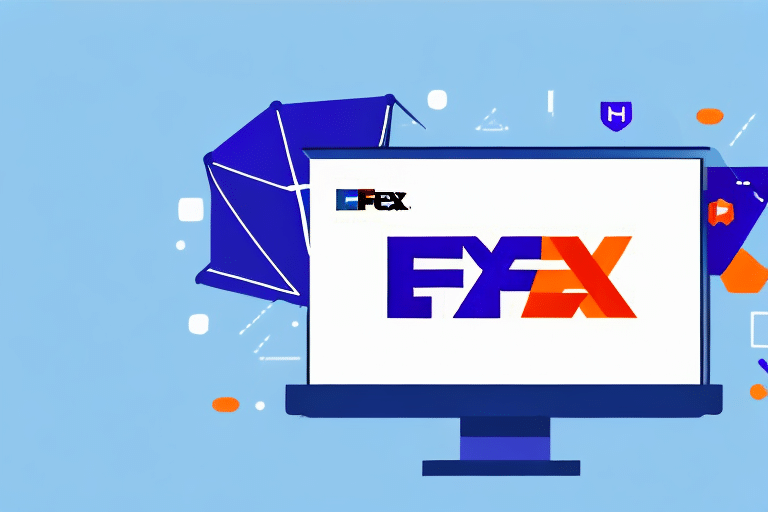Understanding FedEx Ship Manager and the 'Ursa' Version
The FedEx Ship Manager software is a comprehensive tool designed to streamline shipping operations for businesses of all sizes. It allows users to create and print shipping labels, track shipments in real-time, and manage account information seamlessly. The software comes in various versions, including the now-expired 'Ursa' version, which many businesses have relied upon for their daily shipping needs.
Key features of FedEx Ship Manager include:
- Label Creation: Easily generate and print shipping labels tailored to your business requirements.
- Real-Time Tracking: Monitor the status of shipments in real-time, ensuring timely deliveries.
- Account Management: Manage billing, shipping preferences, and user access efficiently.
- Integration Capabilities: Integrate with various e-commerce platforms and business systems for a unified workflow.
By automating these processes, businesses can significantly reduce the time and resources spent on managing shipments, leading to enhanced productivity and cost savings.
The Implications of the 'Ursa' Version Expiration
The expiration of the 'Ursa' version of FedEx Ship Manager signifies the end of official support and updates from FedEx. This means that users of the 'Ursa' version may encounter functionality issues, security vulnerabilities, and incompatibilities with newer systems or integrations. As a result, businesses relying on this version may experience disruptions in their shipping operations, potentially leading to delayed shipments and dissatisfied customers.
According to a recent Statista report, efficient shipping operations are critical for over 70% of small to medium-sized enterprises (SMEs) in the United States. Therefore, maintaining up-to-date shipping software is essential for sustaining business growth and customer satisfaction.
Options After 'Ursa' Expiration
Businesses faced with the expiration of the 'Ursa' version of FedEx Ship Manager have several options to consider:
1. Upgrade to the Latest FedEx Ship Manager Version
Upgrading ensures continued support, access to the latest features, and improved security measures. The newer versions, such as 'Aurora' and 'Gemini', offer enhanced tracking capabilities, a more user-friendly interface, and better integration options.
2. Explore Alternative Shipping Software
There are numerous shipping software alternatives that offer robust features and integrations. Popular options include:
Each of these platforms offers unique features that might better align with your business needs.
3. Utilize Third-Party Logistics Providers (3PL)
Outsourcing shipping operations to a Third-Party Logistics (3PL) provider can be a cost-effective solution. Providers like ShipBob and Flexport manage warehousing, inventory, and shipping, allowing businesses to focus on core operations.
How to Upgrade or Transition to a New Solution
Upgrading to a Newer Version of FedEx Ship Manager
To upgrade, visit the FedEx Ship Manager website and select the desired version. Follow the provided instructions to complete the upgrade process. It is advisable to back up your shipping data before initiating the upgrade.
Choosing the Right Alternative Shipping Software
When selecting an alternative shipping software, consider the following factors:
- Integration Capabilities: Ensure the software integrates seamlessly with your existing e-commerce platforms and business systems.
- Scalability: Choose a solution that can grow with your business needs.
- Support and Training: Opt for providers that offer comprehensive support and training resources.
- Cost: Evaluate the pricing structure to ensure it fits within your budget.
Implementing a Smooth Transition
To facilitate a smooth transition:
- Plan Ahead: Outline a detailed migration plan, including timelines and responsibilities.
- Train Your Team: Provide adequate training to ensure your team is comfortable with the new software.
- Test Thoroughly: Conduct thorough testing to identify and resolve any issues before fully switching over.
- Communicate with Stakeholders: Inform customers and partners about the change to manage expectations.
Maximizing Shipping Efficiency with Updated Software
Leveraging the full potential of your shipping software can lead to significant improvements in efficiency and cost savings. Here’s how:
Utilize Advanced Features
Modern shipping software offers features like batch label printing, automated tracking updates, and address validation. Implementing these can reduce manual workload and minimize errors.
Integrate with E-commerce Platforms
Integrating your shipping software with platforms like Shopify or WooCommerce can streamline order processing and fulfillment, ensuring faster delivery times.
Take Advantage of Discounted Shipping Rates
Many shipping software providers offer discounted rates based on shipping volume. By consolidating shipments and increasing your shipping volume, you can negotiate better rates and reduce overall shipping costs.
Implement Regular Software Updates
Ensure your software is always up-to-date to benefit from the latest features, security patches, and performance improvements. Regular updates can prevent potential disruptions and enhance operational efficiency.
Avoiding Common Mistakes with Shipping Software
Even with robust shipping software, certain pitfalls can hinder your operations. Here are common mistakes to avoid:
1. Neglecting Regular Updates
Failing to update your shipping software can lead to security vulnerabilities and incompatibility issues. Always install the latest updates to maintain optimal performance.
2. Incorrect Shipping Settings
Improper configuration of shipping settings can result in incorrect billing, delayed shipments, or lost packages. Double-check all settings, including shipping rates, carrier preferences, and address formats.
3. Poor Packaging Practices
Secure packaging is crucial to prevent damage during transit. Use sturdy boxes, appropriate cushioning materials, and clearly label packages with accurate shipping information.
4. Not Verifying Shipping Information
Always verify recipient addresses, package weights, and shipping methods before creating labels. Accurate information ensures timely deliveries and reduces the risk of returns.
5. Underutilizing Software Features
Many businesses only use a fraction of their shipping software’s capabilities. Explore and utilize advanced features like analytics, reporting, and automation to enhance efficiency.
By being mindful of these common mistakes, businesses can ensure their shipping operations remain smooth, efficient, and cost-effective.
Conclusion
The expiration of the 'Ursa' version of FedEx Ship Manager poses significant challenges for businesses reliant on this software for their shipping operations. However, by upgrading to the latest version, exploring alternative shipping solutions, or utilizing third-party logistics providers, businesses can continue to manage their shipments effectively. Implementing best practices and avoiding common pitfalls will further enhance shipping efficiency and maintain customer satisfaction. Staying informed and proactive in updating your shipping strategies is essential for sustaining business growth in today’s competitive market.






















